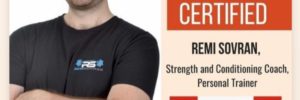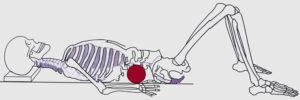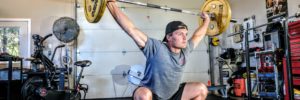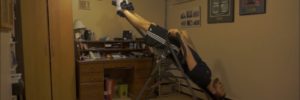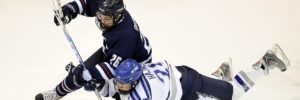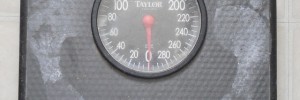
ACSM2016: Things I Learned About the Disc Bulge, Disc Herniation and Degenerative Disc Disease
I recently just got back from Boston, where I attended the American College of Sports Medicine Conference, and I was lucky enough to sit on a session about the spine. During this session, it involved various sports medicine doctors and physical therapists presenting spinal injury cases that they treated. Also, there was a panel of judges that were critiquing each case presented. Two of the four cases presented involved spinal disc injuries, which I found interesting because this is something I like to talk about a lot.
The first case presented involved a women who had a L4-L5 Disc Bulge and L5-S1 Disc Herniation. She previously had a disc bulge at the L4-L5 three years prior but was able to overcome the injury. However, three years later, she suffered a disc bulge and disc herniation were she underwent physical therapy for six months. She attended 21 sessions of physical therapy, were the main focus was spinal traction, using the device known as the TRX 9000. Core stabilization exercises were also incorporated into the recovery routine as well. After six months of physical therapy and 21 sessions, the patient was pain free and able to return to normal activity.
Now, it was very interesting to hear the panel of judges critique this case and one of their critiques is that they thought 21 sessions of physical therapy was a lot. They suggested that 21 sessions is a lot of time and money people have to pay for and they don’t necessarily have the money to people for sessions that could cost up to 100 dollars per session. I found this interesting because when I suffered my disc bulge, I probably went for about upwards of 40 sessions and I didn’t experience any real recovery. This just goes to show that when I was going to physical therapy, they probably weren’t doing a good enough job with me and ultimately, I wasted a lot of time and money. Therefore, the big takeaway here is that if your treatment isn’t working, you should probably discontinue the service your receiving and look to other sources before you waste more money and time.
Secondly, another interesting point that the judges stated was that they were a bit skeptical about the use of spinal traction in healing a disc bulge or herniation. Their primary reasoning for this was because there isn’t a lot of evidence or research out there to support the fact the spinal traction works in healing these types of injuries. However, with that being said, I’m a huge believer in spinal traction, and that was one of the best things that happened to me when I suffered my disc bulge. Without spinal traction, who knows where I’d be today…..
Now, moving on to the second case, it was a bit more interesting because it was a rather unusual case. A 14-year-old lacrosse player was suffering from lower back pain and after various tests (e.g., MRI), the 14-year-old was diagnosed with juvenile disc disorder, which is practically the same thing as degenerative disc disease in older adults.
The lacrosse player had severe pain when going from the cocking phase to throwing phase in lacrosse. (e.g., From extension to twisting to flexion). This was the first big sign that this was a disc injury. Anyways, the patient underwent physical therapy and discontinued lacrosse for a period of time. After discontinuing the lacrosse, the player got better and didn’t suffer from any pain. Also, the physical therapy program involved lots of core stabilization exercises in order to develop a strong foundation for the spine. After a period of sufficient rest and core development, the lacrosse player was able to turn to playing lacrosse. However, the lacrosse player had to manage his playing time because if he over did it, he would experience flare-ups. Therefore, it was important to educate the individual about different spinal motions and proper rest, in order to ensure he could continue playing lacrosse pain free.
So, with all that being said, there are some important points that I want to sum up:
1) Don’t waste your money and time on services that don’t work for you.
2) Spinal traction does work in treating disc bulge and disc herniation injuries.
3) Core stability exercises are important in developing a strong foundation for the core.
4) A proper rehab program works in treating disc injuries, and surgery should always be seen as a last option.
Cheers,
Remi


